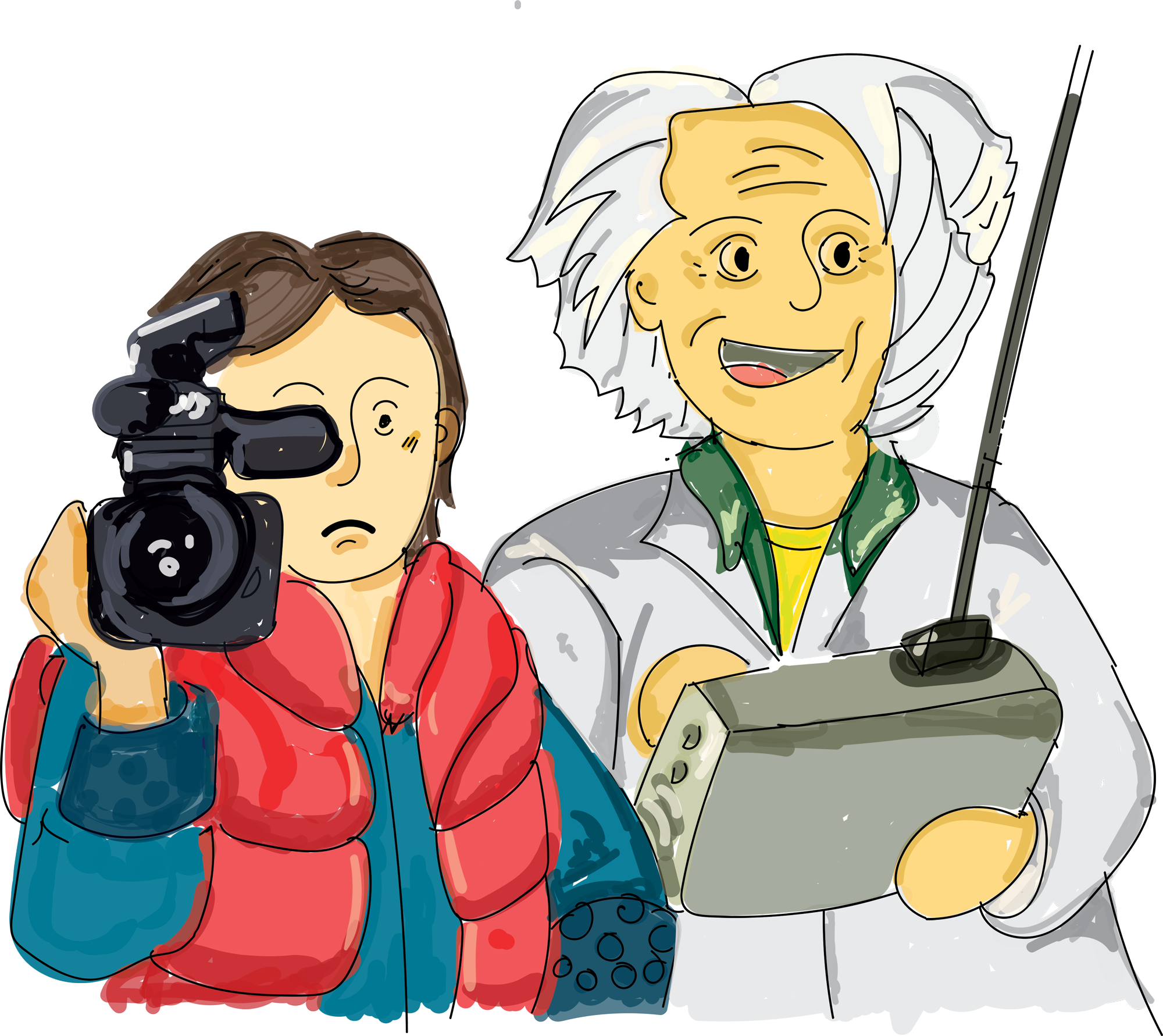[dropcap]W[/dropcap]here we’re going, we don’t need… roads.”
With those iconic words, Doc and Marty resume their time-traveling adventures in the sequel to the 1985 hit Back to the Future.
The Back to the Future franchise is now a classic time-travel film trilogy that follows Michael J. Fox as 17-year-old Marty McFly. In the original film, Marty accidentally travels 30 years into the past in a time-traveling DeLorean invented by his friend Emmett ‘Doc’ Brown, played by Christopher Lloyd.
Marty has musical ambitions, a girlfriend who loves him, and a nice house in the suburbs of Hill Valley, California. Yet his life still leaves a lot to be desired: his father’s supervisor is a bully, his mother has a drinking problem, and his school principal labels him a “slacker.”
Upon travelling to the year 1955, Marty accidentally interrupts his parents’ love story and must right it so he can return to a future where he still exists. Marty astutely reunites his parents in such a way that when he returns to the future, he finds things have changed for the better. He has little time to enjoy it, however, as Doc immediately beseeches Marty to travel to 2015 with him because “something has gotta be done” about Marty’s kids.
Living in 2017, two years past the ‘future’ in Back to the Future Part II, I was curious to see how accurate creators Bob Gale and Robert Zemeckis’ predictions of the future were and how the movie connected to my life. I also wanted an excuse to marathon the entire Back to the Future trilogy during midterm season without judgement from my family.
I was pleasantly surprised that the future Back to the Future Part II’s $40 million budget brought to life mirrored the actual future — my present — quite well. Though we have not been subjected to any more Jaws sequels after 1987’s Jaws: The Revenge, its hologram poster in the film brings to mind Tupac Shakur’s 2012 posthumous hologram performance at Coachella and the trend of virtual concerts and virtually created popstars.
Marty’s self-lacing Nike shoes exist, too, though they aren’t the most affordable choice of footwear. There is even a Kickstarter to make Marty’s self-drying jacket a reality, though the jacket’s speaking abilities remain to be seen.
The glasses Marty’s children wear at the dinner table are reminiscent of Google Glass — which admittedly failed to take hold — and virtual reality headsets. Marty’s video call with his boss on his TV is possible thanks to smart TVs and apps like Tellybean and Chromecast.
As the movie predicted, using thumbprints to pay for things is common today with touch identification phones. Using thumbprints to enter your house is less common, as is having a smart home, but both are realities. Hands-free gaming, flat-screen TVs, and tablets are also widespread. Hoverboards are real, too — they don’t actually hover, though companies like Lexus and Arx Pax are in the midst of fixing that. Drones that walk dogs seem more unaffordable than far-fetched, as do automated gas stations. A few misses aside, Back to the Future Part II predicted the future with jaw-dropping accuracy.
The only thing more fascinating than the series’ predictions is its plot: changing one’s past to create a nicer future, thanks to a time machine.
If only I had a time machine.
This thought crossed my mind as I took in the movie, following me throughout the entirety of the next day. The idea of going back to create change has an immense appeal to me. This is primarily because I despise the feeling of regret washing over me even more than I loathe wearing wet socks.
I can’t help but think about all the things that I would change if I had a time-travelling DeLorean. Hell, I’d settle for a time-travelling Ford Pinto if it meant I could change my past.
I’d exercise more in the past, so I wouldn’t run out of breath after climbing one flight of stairs. I’d study better, so the soundtrack of a horror movie wouldn’t accompany me every time I opened the grades section on Portal. I’d learn how to stand up for myself rather than meekly accepting whatever mark a TA felt I deserved. I’d probably give my past self a sports almanac so I wouldn’t have to worry about the increasing numbers on my ACORN account or dread opening my bank statements. I’d voice all the things I left unsaid to my crushes, my friends, my family members, my teachers, and my enemies. I’d try everything I wanted to, unburdened by the weight of consequences, so I wouldn’t imagine all the ‘what-ifs’ whenever I couldn’t sleep.
Everyone, I think, must imagine things they would do differently in the past if were they given the chance. The idea of changing the past is exciting, but a continued obsession with it can be toxic and lead into the quicksand of self-pity.
As hard as it is to do, it would be better to make the most of today than live in the past or constantly fret about the future and how every decision might affect it. This is by no means an excuse to marathon movies or binge-watch a new TV series during midterm season. It is meant to serve as a reminder of sorts that it is okay to breathe once a while and not worry about the ripple effect of every single decision you make. It is also meant to prompt you to stop obsessing over mistakes made in the past and long to change them.
Like Doc says, “Time-traveling is just too dangerous! Better that I devote myself to study the other great mystery of the universe.” While in Doc’s case this mystery is women, in my version of the present, it’s probably how to use the printer-photocopier-scanner machines at U of T’s libraries.
